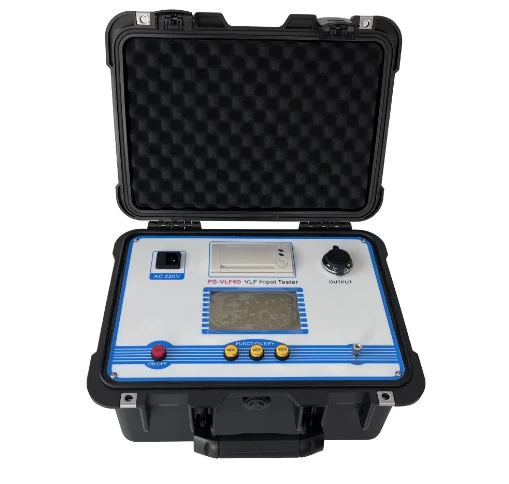TEL:
+86-0312-3189593
 English
English

Telephone:0312-3189593

Email:sales@oil-tester.com

-
 Afrikaans
Afrikaans -
 Albanian
Albanian -
 Amharic
Amharic -
 Arabic
Arabic -
 Armenian
Armenian -
 Azerbaijani
Azerbaijani -
 Basque
Basque -
 Belarusian
Belarusian -
 Bengali
Bengali -
 Bosnian
Bosnian -
 Bulgarian
Bulgarian -
 Catalan
Catalan -
 Cebuano
Cebuano -
 China
China -
 China (Taiwan)
China (Taiwan) -
 Corsican
Corsican -
 Croatian
Croatian -
 Czech
Czech -
 Danish
Danish -
 Dutch
Dutch -
 English
English -
 Esperanto
Esperanto -
 Estonian
Estonian -
 Finnish
Finnish -
 French
French -
 Frisian
Frisian -
 Galician
Galician -
 Georgian
Georgian -
 German
German -
 Greek
Greek -
 Gujarati
Gujarati -
 Haitian Creole
Haitian Creole -
 hausa
hausa -
 hawaiian
hawaiian -
 Hebrew
Hebrew -
 Hindi
Hindi -
 Miao
Miao -
 Hungarian
Hungarian -
 Icelandic
Icelandic -
 igbo
igbo -
 Indonesian
Indonesian -
 irish
irish -
 Italian
Italian -
 Japanese
Japanese -
 Javanese
Javanese -
 Kannada
Kannada -
 kazakh
kazakh -
 Khmer
Khmer -
 Rwandese
Rwandese -
 Korean
Korean -
 Kurdish
Kurdish -
 Kyrgyz
Kyrgyz -
 Lao
Lao -
 Latin
Latin -
 Latvian
Latvian -
 Lithuanian
Lithuanian -
 Luxembourgish
Luxembourgish -
 Macedonian
Macedonian -
 Malgashi
Malgashi -
 Malay
Malay -
 Malayalam
Malayalam -
 Maltese
Maltese -
 Maori
Maori -
 Marathi
Marathi -
 Mongolian
Mongolian -
 Myanmar
Myanmar -
 Nepali
Nepali -
 Norwegian
Norwegian -
 Norwegian
Norwegian -
 Occitan
Occitan -
 Pashto
Pashto -
 Persian
Persian -
 Polish
Polish -
 Portuguese
Portuguese -
 Punjabi
Punjabi -
 Romanian
Romanian -
 Russian
Russian -
 Samoan
Samoan -
 Scottish Gaelic
Scottish Gaelic -
 Serbian
Serbian -
 Sesotho
Sesotho -
 Shona
Shona -
 Sindhi
Sindhi -
 Sinhala
Sinhala -
 Slovak
Slovak -
 Slovenian
Slovenian -
 Somali
Somali -
 Spanish
Spanish -
 Sundanese
Sundanese -
 Swahili
Swahili -
 Swedish
Swedish -
 Tagalog
Tagalog -
 Tajik
Tajik -
 Tamil
Tamil -
 Tatar
Tatar -
 Telugu
Telugu -
 Thai
Thai -
 Turkish
Turkish -
 Turkmen
Turkmen -
 Ukrainian
Ukrainian -
 Urdu
Urdu -
 Uighur
Uighur -
 Uzbek
Uzbek -
 Vietnamese
Vietnamese -
 Welsh
Welsh -
 Bantu
Bantu -
 Yiddish
Yiddish -
 Yoruba
Yoruba -
 Zulu
Zulu
лют . 02, 2025 01:42
Back to list
check transformer voltage with multimeter
Checking transformer voltage with a multimeter is an essential skill for electrical technicians, engineers, and hobbyists alike. As a cornerstone of many electrical systems, transformers require careful monitoring and maintenance to ensure their optimal performance and safety. Here, we provide a comprehensive guide on how to accurately check transformer voltage using a multimeter, emphasizing expert techniques and safety precautions to enhance your DIY electrical projects.
4. Testing Secondary Voltage After confirming the primary voltage, proceed to the secondary side. Safeguarding the integrity of measurements, apply the probes to the output terminals. The multimeter reading should align with the transformer's rated secondary voltage. Inconsistencies might point to transformer faults or load issues. 5. Analyze and Troubleshoot If the voltage readings are incorrect, systematically troubleshoot potential causes. Check for obvious signs of wear, such as burnt contacts or insulation damage, and ensure all connections are secure. Additional steps may include probing for continuity in the windings, which can identify open or shorted conditions. 6. Routine Maintenance Tips Regular maintenance can preemptively catch many transformer issues. Dust accumulation and moisture can affect performance, so ensure that the transformer is kept clean and dry. Furthermore, auditing the connections and confirming that no components exhibit excessive wear can extend the transformer's lifespan. Using a multimeter to check transformer voltage is both straightforward and invaluable in maintaining electrical systems' reliability and efficiency. Mastery of this process underscores expertise in problem-solving and reinforces trustworthiness in electrical diagnostics. Regular practice and adherence to safety protocols will hone this skill, rendering it second nature for both professional and amateur users. Remember, when dealing with transformers or any high-voltage equipment, safety is the highest priority. In cases of uncertainty or persistent issues, consulting with a professional electrician is recommended. This guarantees accurate diagnostics and safeguards against potential electrical hazards, ensuring both your safety and the longevity of the electrical systems you manage.


4. Testing Secondary Voltage After confirming the primary voltage, proceed to the secondary side. Safeguarding the integrity of measurements, apply the probes to the output terminals. The multimeter reading should align with the transformer's rated secondary voltage. Inconsistencies might point to transformer faults or load issues. 5. Analyze and Troubleshoot If the voltage readings are incorrect, systematically troubleshoot potential causes. Check for obvious signs of wear, such as burnt contacts or insulation damage, and ensure all connections are secure. Additional steps may include probing for continuity in the windings, which can identify open or shorted conditions. 6. Routine Maintenance Tips Regular maintenance can preemptively catch many transformer issues. Dust accumulation and moisture can affect performance, so ensure that the transformer is kept clean and dry. Furthermore, auditing the connections and confirming that no components exhibit excessive wear can extend the transformer's lifespan. Using a multimeter to check transformer voltage is both straightforward and invaluable in maintaining electrical systems' reliability and efficiency. Mastery of this process underscores expertise in problem-solving and reinforces trustworthiness in electrical diagnostics. Regular practice and adherence to safety protocols will hone this skill, rendering it second nature for both professional and amateur users. Remember, when dealing with transformers or any high-voltage equipment, safety is the highest priority. In cases of uncertainty or persistent issues, consulting with a professional electrician is recommended. This guarantees accurate diagnostics and safeguards against potential electrical hazards, ensuring both your safety and the longevity of the electrical systems you manage.
Previous:
Next:
Latest news
-
Testing Equipment Industry Sees Major Advancements in 2025: Smart & Precision Technologies Lead the WayNewsJun.06,2025
-
Applications of Direct Current Generators in Renewable Energy SystemsNewsJun.05,2025
-
Hipot Tester Calibration and Accuracy GuidelinesNewsJun.05,2025
-
Digital Circuit Breaker Analyzer Features and BenefitsNewsJun.05,2025
-
Benefits of Real-Time Power Quality Monitoring Devices for Industrial EfficiencyNewsJun.05,2025
-
Earth Fault Loop Testing in High-Rise Building Electrical SystemsNewsJun.05,2025



